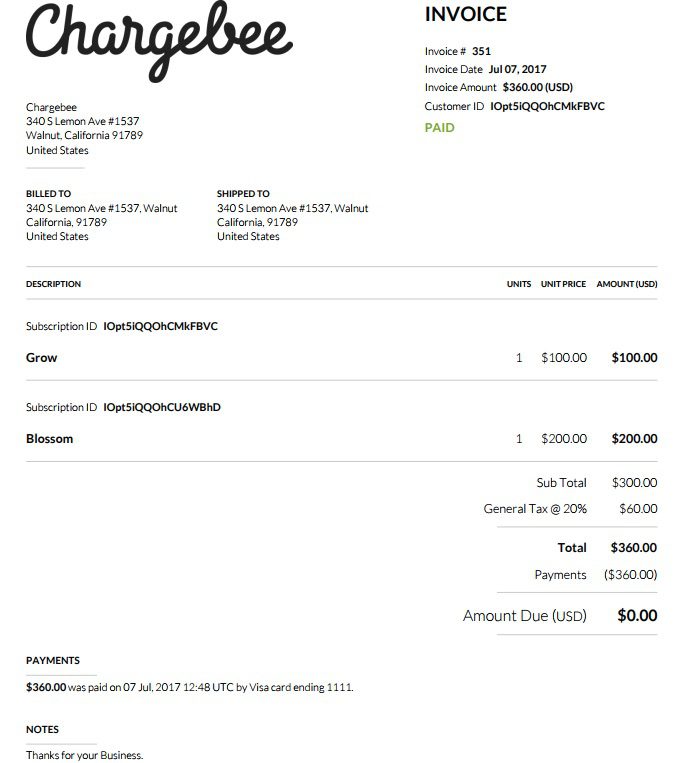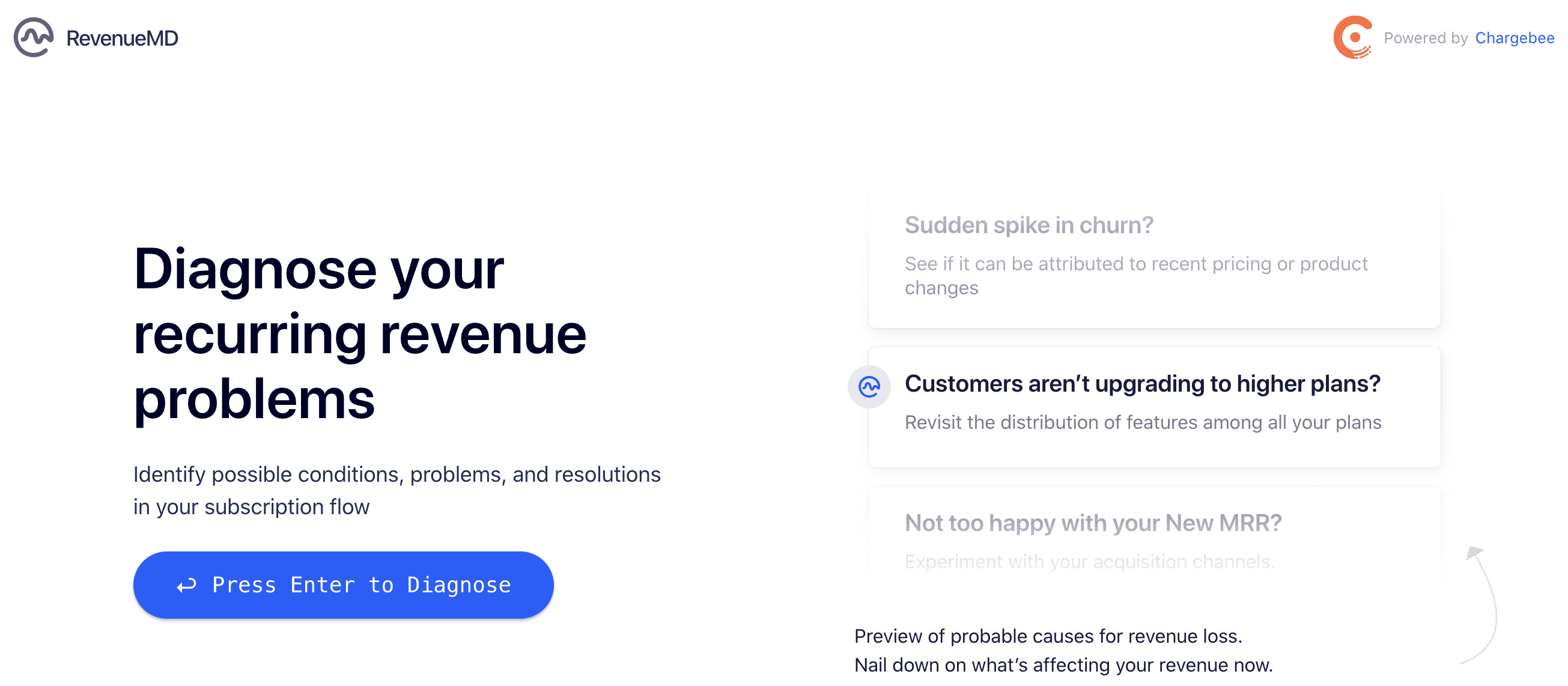Are you finding it increasingly difficult to manage your growing subscribers? Is retention becoming a challenge, or are you losing out on revenue opportunities like upselling? If you face challenges like these, then it’s likely that your billing has become a thorny issue.
You’re not alone – growing SaaS companies often find themselves grappling with the sheer complexity of the recurring billing process. If left unchecked, this results in high churn and low acquisition rates, which become roadblocks to your growth.
Here are some of the common recurring billing issues subscription companies may face and how you can overcome them:
- Unscalable Billing Infrastructure
- Loss of Revenue Due to Failed Payments
- Growing Complexity of the Invoicing Process
- Insufficient Operational Rigour
- Increasing Difficulty in Recognizing Revenue
- Lack of Third-Party Integrations
- Inability to Support Global Expansion
1. Unscalable Billing Infrastructure
Most subscription billing companies find themselves at a crossroads on whether to build their billing system or use one of the available solutions in the market. Building billing in-house may seem like a cost-effective option. However, in the long run; it is an inefficient solution for the following reasons:
Managing Growing Customers
As you scale, every additional subscriber, pricing change, supporting different payment methods, upgrade and downgrade requests, flexible billing, and prorations will exponentially add to the code complexity. At this point, running an in-house billing system will feel like running a second product within your core product, which brings us to the second reason.
Time Sensitivity
Any SaaS business on the road to scaling fast should be able to experiment with pricing, discount coupons, and trial management rapidly. However, with a substantial operational dependency on the company resources to maintain a homegrown billing system (still not as powerful as a third-party recurring billing solution), it might take months or more.
Compliance
Beyond operations, there’s also the matter of security. With your billing system collecting sensitive payment and personal information, compliance to PCI-DSS to a broader regulation like the GDPR and accounting standards like ASC 606 is a must.
On these grounds, it is more viable to use existing recurring billing platforms than building your billing in-house.
Billing solutions like Chargebee can streamline your recurring billing, plug the revenue leaks, and make subscription management a breeze with features like:
- customizable billing logic,
- automated proration handling,
- grandfathering,
- usage-based billing,
- consolidated invoicing, and more.
The same holds if you’re deciding to go for a payment gateway rather than a billing software for two main reasons:
A growing business will soon outgrow the modest billing capabilities of a gateway.
Another fundamental advantage that a billing software has over a gateway is that it is designed to be integrated with multiple payment gateways and payment methods, which helps in;
o market expansion through multiple payment methods, and
o minimizing the risk of high payment failures that come with being locked in with one payment gateway.
For more details on the product-level (and service-level) capabilities, you should look for in a recurring billing system, check out our guide on getting started with subscription billing software.
2. Loss of Revenue Due to Failed Payments
It’s one thing when your customers choose to stop paying, but it’s more painful to lose revenue due to churn when your customers didn’t intend to stop paying – and that’s involuntary churn. It could happen for various reasons, from insufficient funds to maxed-out credit cards to even connectivity issues.
About 20-40% of churn is usually from involuntary churn. But here’s the good news – almost all of it is avoidable. For instance, Whiteboard reduced involuntary churn and increased their MRR by 35%.
You can reduce churn through superior dunning management. Dunning is the process of retrying payment attempts and sending payment reminders to customers when a transaction gets declined.
Here are a few methods that you can use to avoid loss of revenue due to involuntary churn:
- Pre-dunning emails – send out an email to your customer reminding them that their card details are about to expire.
- Backup payment methods – set up backup payment methods for each customer to immediately fall back on when the first payment method fails.
- Create dunning personas – group your customers into dunning personas based on their ticket sizes, geo-location, and what kind of payment process you have in place for them (invoice-based payments vs. automated card and online wallet payments). Use these personas to tailor retry cycles.
Additionally, it’s more effective to see the payment failure life cycle as a whole and implement tactics that complement each other through every stage. So, here’s a list of 23 ways to reduce involuntary churn across six lifecycle stages of payment failure.
3. Growing Complexity of the Invoicing Process
If you’re spending weeks creating invoices and chasing payments, it’s high time you choose to automate the process efficiently.
Here are a few steps to ensure you improve your invoicing process:
Say No to Cookie-Cutter Invoices
Invoices are often ignored branding opportunities. Billing materials like invoices and even dunning emails are great places to implement customization. A robust tool should enable you to tailor your invoices to your brand and your customer – including the color scheme, address format, payment details, and more.
Ensure Transparency
Charge exactly when your customers should be charged and charge precisely for what your customers use. Make sure all the information is broken down into a clear, understandable format.
Consolidate Invoicing
When you have a customer with multiple subscriptions incurring multiple charges for the subscription, instead of sending one invoice every time such a change occurs, it is more efficient to send a consolidated invoice.
Here’s a sample of an invoice that consolidates charges for a customer:

Don’t Invoice for Every New Charge
The creation of subscription-related charges should be kept separate from the actual invoicing. For instance, you can add them to unbilled charges. This becomes useful for businesses allow customers to make changes to the subscriptions in the middle of the billing cycle, like;
- upgrades or downgrades,
- switching to a different plan,
- attaching add-ons in the middle of the subscription term, and
- adding a one-time charge or any other additions or changes to the subscription.
Invoice in Advance
Sometimes customers want to send an invoice before the actual subscription start or renewal date. Advance invoicing comes in handy to schedule your billing to budget for on-time shipping or accommodate a sudden hike in demand for a non-renewing subscription.
Send Out Reminders
Finally, remind your customers a particular number of days before the invoice is due.
4. Insufficient Operational Rigour
Like the importance of having the right weapons at war, the right metrics for business make all the difference. In SaaS, there exists an armory of shiny metrics. Some of the most critical SaaS metrics include MRR, Churn, Recurring Profit Margins (ARR, less the number of canceled subscriptions and the non-growth spend), and Growth Efficiency (the amount it costs to get $1 annual contract value).
Beyond looking at these metrics individually, a combination of various metrics can give you way more actionable insights to be able to answer critical questions like:
- Are you making more money than you’re losing?
- Which feature is attracting the most revenue?
- Is your free plan attracting the right customers?
- How long should your trial period be?
- How are your new pricing plan changes impacting your business?
- Is your customer churn a sales problem or a value problem?
Answering these questions is not easy. You need reports and dashboards that give you actionable insights on what worked and what didn’t.
And for this, you need an analytics tool that gives you a 360° view of your business growth on one dashboard and lets you go deeper into analyzing your metrics to identify your best revenue maximization opportunities.
Diagnose your recurring revenue issues in an instant. Nail down on what’s affecting your revenue now by identifying possible conditions, problems, and resolutions in your subscription flow with RevenueMD by answering a few basic questions.

5. Increasing Difficulty in Recognizing Revenue
Revenue recognition might be simple when you’re starting as a fledgling company. But as you grow, reconciliation and recognition will become complex in terms of time and resources spent.
Here are two key points to note:
- Full-scale automation is a necessity for large-scale reconciliation.
- Similarly, to efficiently recognize revenue – even without including other complex factors like proration – you need the help of built-in reports.
Hence, it is critical for your SaaS subscription management platform to scale with your business – automate reconciliation and have built-in reports to recognize revenue.
For instance, Chargebee-Xero integration simplifies your accounting process by automatically syncing invoices and related details to the Xero account. It reduces the manual effort spent exporting invoices from Chargebee, importing them into Xero, and increasing data accuracy.
On this note, let’s discuss the next common recurring billing challenge.
6. Lack of Third-Party Integrations
Traditionally, billing might have been a siloed process, only restricted to the finance vertical. But in reality, billing spans different business functions like sales, reporting and analytics, marketing, and customer support. Each of these verticals communicates with each other and needs subscription information to perform their roles. For instance, the sales team needs to pull up subscriber information instantly to issue discounts or coupons. Or, the customer support team needs the same information to address a specific customer’s request. In such a case, you need a complete billing system software as a single source of truth to streamline your entire subscription billing process across all business functions. And a proven and efficient way of doing that is through integrations.
To give you an example, Chargebee Integrations covers various business functions like finance, e-commerce, reporting and analytics, marketing, collaboration, sales, and customer support, with close to 40 integrations.
7. Inability to Support Global Expansion
Supporting multiple payment methods, currencies, and various tax rules is the holy grail of any recurring billing system worth its salt. Why?
To penetrate global markets successfully, you need to overcome the challenges that come with international transactions.
When you are foraying into new markets overseas, you also need to meet local tax requirements and compliance with accounting standards. Apart from having your billing architecture take care of localization (multi-currency pricing), support global payment methods and gateways, automating tax computations are vital.
If your payment system isn’t flexible, it will deter you from what’s most important to you – which is growing your business. You need a tech stack that can help you experiment rapidly with pricing.
Recurring Billing Best Practices for Saas Businesses
In going through how to overcome the common recurring billing challenges, we have gone through many efficient courses of action. However, to recap, here’s a snapshot of the best practices for SaaS billing:
1. Increase Reliability with Billing Automation
Reduce your response time – remove developer dependencies, handle complex recurring billing scenarios, eliminate manual errors, and accommodate unique buying cycles – with the help of automation for streamlined billing.
2. Enhance Visibility with Analytics
Take decisive actions with comprehensive subscription analytics – find blind spots (revenue leakages) like churn and hidden gold mines (revenue opportunities) like upsell and cross-sell avenues.
3. Proactively Reduce Churn
Reduce churn with a robust subscription management platform that can significantly improve your processes for better customer experience, leading to better retention.
4. Drive Efficiency with Revenue Operations
Achieve strategic alignment throughout your revenue-driving functions – marketing, sales, operations, finance, and customer success – across the entire customer lifecycle to drive uninhibited growth.
For detailed information on enabling hyper-growth with revenue operations, visit our Guide to Revenue Operations for a High-Growth SaaS.
In Conclusion
We can see that recurring billing isn’t a straightforward process. Billing errors can and do happen. However, these billing mistakes can be avoidable, and they can be resolved.
Go beyond billing with a provider who has your growth in mind. A robust billing system can help you improve customer retention by providing a stellar billing experience and increasing ARPU through upsell add-ons or promotions using coupons. It can also help you stay on top of your sales cycle by having metrics at your fingertips, and a lot more.
With Chargebee, you can solve for your today, and scale for your tomorrow. Head here to know more!

